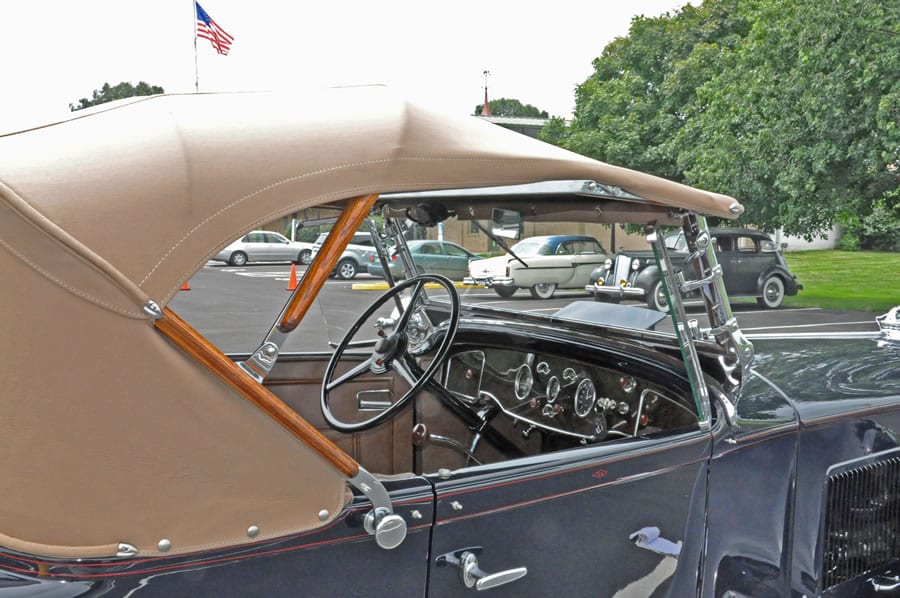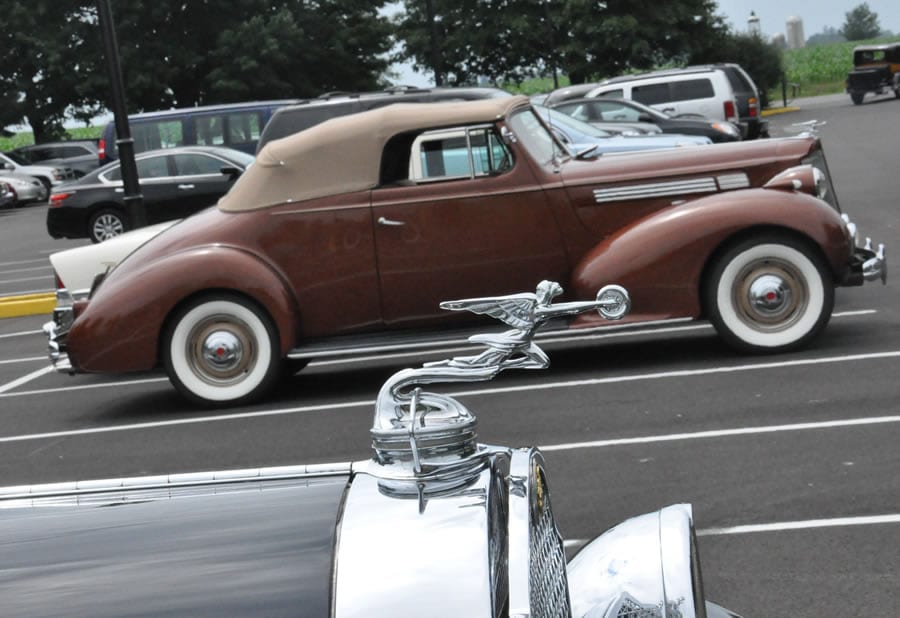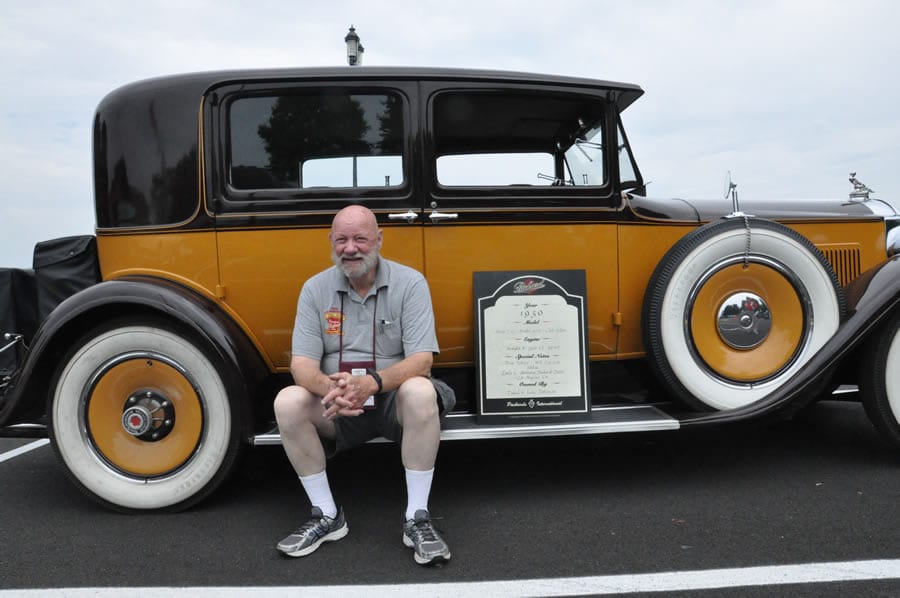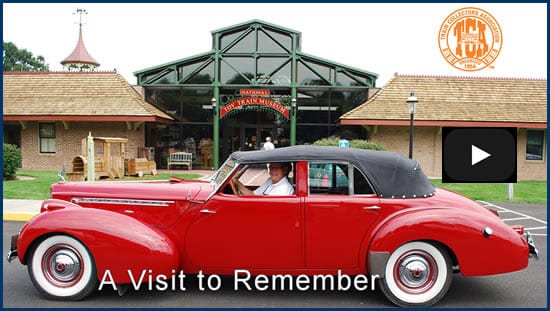Packard Automobile Classics Drops in on the National Toy Train Museum
By John E. Newhagen (TCA# 08-62541) Summer 2015
Visitors to the National Toy Train Museum July 13, 2015 got a special treat; a parking lot full of classic Packard luxury cars.
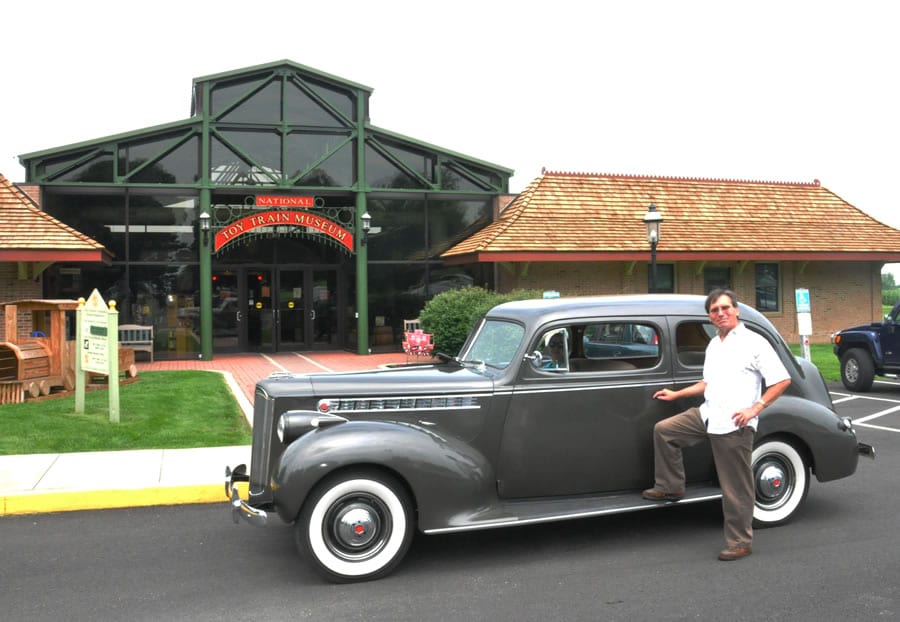
“We came to see cool toy trains but, wow, we never expected to see this,” said one dad with his 10-year-old son in tow as he admired an eight cylinder 1931 Rumble Seat Roadster.
The occasion was the first leg of the 50th Packard Automobile Classics (PAC) National Meet. The tour began July 13 with the morning drive from the hotel in Wyomissing to the Railroad Museum of Pennsylvania, then a ride on the Strasburg Rail Road across the street, and finally a tour of the National Toy Train Museum. The motor coaches set forth in three waves, arriving at the museum every few hours. That meant there were elegant examples of the antique beauties on hand in the parking lot for the enjoyment of visitors, TCA members, and museum staff all day long.
Examples included Ray Watkowski’s pastel green 1955 Clipper Super. Ray not only had copies of the original sales brochures on hand, his trunk housed a complete set of color coordinated luggage matching the car paint. He confided that he kept his tools inside for emergency repairs.
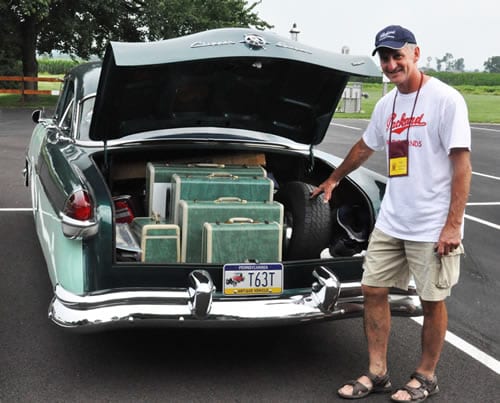
Older models frequently sported the signature chrome swan on their hoods, with the occasional Adonis figure as a classy alternative. Dave Robinson, owner of a 1930 Model 732 Royal Six, pointed out that the factory ornament was actually quite plain and the first thing a new owner would do was to adorn the car with one of the fancy after-factory alternatives.
The Packard marque always represented luxury, from its inception in 1899 to its demise in 1959. From its beginning, through and beyond the 1930s, Packard built vehicles that were the epitome of high-priced luxury. The company was referred to as being one of the “Three P’s” of American motordom royalty, along with Pierce-Arrow and Peerless, according to a Popular Mechanics homage to the marque in 2014. Entering the 1930s Packard attempted to beat the stock market crash and subsequent Great Depression by manufacturing ever more opulent and expensive cars than it had prior to October 1929. A new model during that era would set the buyer back from $750 to $1,750, or about $11,000 to $27,000 by today’s standards. A search of present day online offerings shows starting bids around $40,000 for a nice example to be common.
Many cars from the 1930’s and 1940’s, such as David Robinson’s 1930 model 732 Royal 6, had the back seat compartment separated from the front by a privacy window that could be rolled up and down. Owners would, of course, cherish their privacy and roll the window up to exclude the prying ears of the chauffeur from their conversations.
Tired of eating your kneecaps in cramped contemporary commercial airliner seats? No problem for the well-to-do in the ‘30s; back seat leg room was so grand that exiting had to be facilitated by special hand grips that passengers used to hoist themselves onto the running boards.
The visit to the museum invited a comparisons between pre-war toy trains and the elegant Packard, and their current collectors as well. First off, once inside the museum, several owners admitted they too had trains. One gentleman said he owned “a few trains,” adding that he had a pre-war “2-6-something E set” saved since childhood at home in the attic, still in its original box. The box did “have a flap missing,” he said. Oh my!
It was striking how the owners seem to share a sense of the importance of authenticity with toy train folk. Not a single car on the tour had undergone a “frame off” restoration. An astonishing number sported original interiors and body paint. Radical restorations, that usually include powder coat paint jobs on the frame and countless layers of bright body enamel, might be seen on 1950’s Chevys at the county fair on the Fourth, but not here. As for toy trains, I learned from Bruce Greenberg at York when I first began acquiring some pre-war Lionel examples that extreme restoration treatments similarly should be avoided. I will admit I have done major restorations on a few lost causes, and there is a place for them in the hobby. But nothing can take the place of the original mahogany on the frame of a classic Packard’s convertible top or the nickel and brass trim on a pre-war Lionel tinplate locomotive. Those details tell us something about what our culture valued 80 years ago, and serve as a counterpoint for what we have today.
(And BTW, if the spouse is complaining about the cost of that last addition to your layout, one Packard owner reported an engine rebuilt set him back $10,000!)
———————-
Editor’s Note: The enthusiasm for this event was so heartening that TCA used it as a springboard for an effort to increase group visits to the National Toy Train Museum, and produced a promotional video. See the video here.

